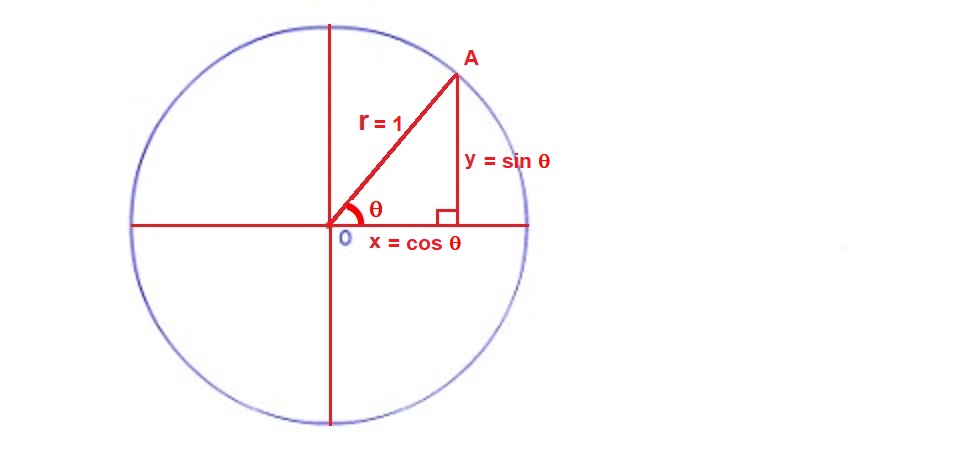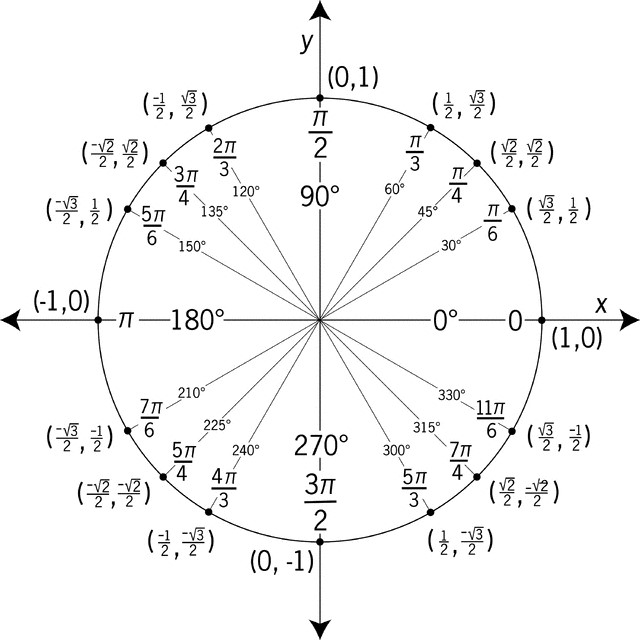Sin^2 120° + cos^2 150° + tan^2 120° + cos180° - tan135° Please Solve Value ?
1 Answer
Explanation:
.

Above, you see a unit circle (circle with radius of one). By definition,
As angle
There are certain commonly used angles in trigonometry, such as
The above angles in radian are
These coordinates are the
Knowing these values in trigonometry are like knowing the multiplication table in arithmetic.
The best way to accomplish this is to have a printout of a unit circle with these measurements both in degrees and radians in front of you; and refer to them when solving trigonometric problems.
After some time, they will stay in your mind. But it is essential that you do this. Otherwise, you will find yourself severely handicapped on tests.
Here is a unit circle with popular angle values on it:

You can find many versions of the unit circle online to print for your use.
The values you saw in my solution came from the unit circle.

